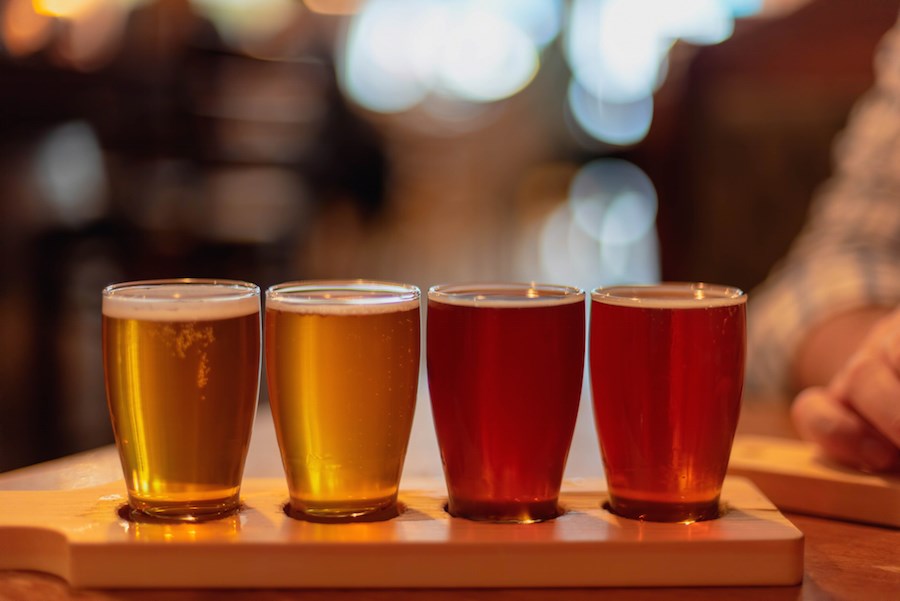The B.C. government has approved a series of regulatory changes it says is designed to improve the experience of people visiting wineries, breweries and distilleries across the province.
The new measures allow people to consume liquor, beer and wine samples while on a guided tour, and buy packed liquored sales in more places. They also allow manufacturers to provide more customized sampling, while selling and promoting products in picnic areas.
"The changes we are making will create better experiences for visitors of wineries and liquor manufacturers across the province, helping them — and all of B.C. — to be a more competitive and desirable destination for visitors," Mike Farnworth, Minister of Public Safety and Solicitor General, said in a statement.
Wineries are now permitted to serve multiple flights of up to 284 millilitres per patron per day, while breweries and cideries can offer up to 682 millilitres per person per day. Anyone visiting a distillery can now receive up to 85 millilitres (or three ounces) of samples per day.
Ken Beattie, executive director of the BC Craft Brewers Guild, said the new rules came following industry feedback and will benefit tourism across the province.
"We're excited about the new opportunities for guided tours, sampling and sales, which will allow us to showcase our products and hospitality in even more innovative ways,” Beattie said.
B.C. wine and craft beer face big hurdles
B.C.'s wine industry has faced significant challenges in recent months. In January, a cold snap dropped temperatures to below minus 27 degrees Celsius in parts of the Okanagan, wiping out nearly all of the Okanagan's 2024 vintage.
That's in addition to declines in grape production seen last year. The latest 2023 data from Statistics Canada shows grapes faced the steepest decline in B.C. fruit yields, with labrusca grape production falling nearly 28 per cent and vinifera grapes taking a more than 23 per cent hit. Experts say swings in extreme weather — something expected to become more frequent with climate change — were to blame.
Pressures from inflation are also hitting breweries in across Canada. Prices on everything from malt to aluminum cans and cardboard have increased by double digits, said Christine Comeau, executive director of the Canadian Craft Brewers Association.
Many larger breweries can absorb those costs and maintain prices for consumers. That also means craft breweries are forced to hold their prices as well.
Since the start of 2023, Comeau says 70 craft breweries have closed down across the country.
“It’s just everywhere. The inflationary pressures have been hitting craft breweries really hard,” she said.
Breweries pushed to have stronger business models
Starting April 1, some of those pressures were alleviated when the federal government amended Canada’s Excise Tax Act to allow craft breweries producing less than 15,000 hectolitres of beer to get a rate reduction. That will help craft breweries recover costs on some of their inputs, said Comeau.
“It’s certainly forcing craft breweries to have strong business models. They have to be more innovative. A lot of breweries are positioning themselves to be tourism destinations,” Comeau said.
Comeau said the has already forged a tourism model other provinces are looking to copy. The latest regulation changes from the B.C. government will strengthen the province’s position as a destination for unique beer, she added.
At 40 per cent of all sales, B.C. craft beer currently has the highest market penetration in Canada.
“That’s really impressive,” said Neil Reid, beer researcher and professor of geography and planning at the University of Toledo in Ohio. “That’s a very high number.”
Also known as the “Beer Professor,” Reid says part of the current challenge for the North American craft beer industry can be chalked up to a post-pandemic drop off in sales.
“I think the consumers really did step up during COVID, they picked up a six pack or two. They said we’re going to support you during this difficult challenge,” Reid said. “As it’s kind of waned, there has been this downturn in sales.”
At the same time, Reid said many markets are becoming saturated with craft breweries and may be reaching a tipping point where they can’t support more breweries without a change in the way they operate.
“It’s like any family business,” he said. “They're running on fairly thin margins. It takes a few years to make a profit and that can be a challenge when you’re getting started.”
And that’s before you factor in the impacts of climate change, which Reid says will likely impact the sourcing of inputs like hops and barley as growing conditions shift south. He said the question then becomes, can you build infrastructure and find a land base to keep up production and feed the demand for beer?
“I’m not sure we know the answer to that yet.”


